With its low volumes, Alfa Romeo has struggled for many years and relied on the loyalty of the alfisti to keep it around. Heritage can only go so far in modern business, but Alfa Romeo has usually survived to continue its business. Now under the Stellantis Group, it will have some more breathing space with access to considerable shared resources that will allow one new model to be launched every year during this decade.
It’s been a while since we saw a really new model from Alfa Romeo and the new Tonale is something that has taken almost 3 years to go into production. A concept was shown at the 2019 Geneva Auto Show with a plan to put it in showrooms in a few years. By the time Stellantis came into the picture, the development would have been too far ahead to stop or change, so in 2022, it has its global debut although many markets may only get it in 2023.
The Tonale has compact dimensions which means it will do battle in the most competitive area of the SUV segment. While said to remain true to its DNA of Italian sportiness, it also marks the metamorphosis of the brand as it starts a new era of connectivity and electrification.
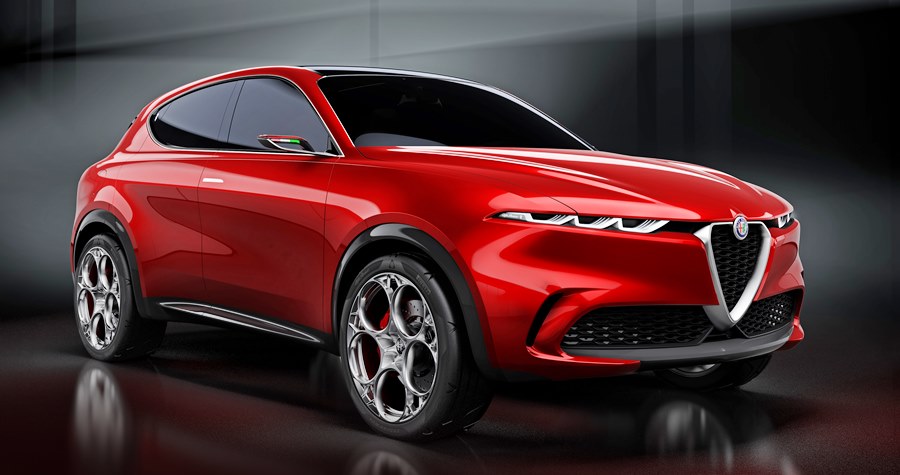
Concept car inspiration
Much of the design draws on the concept car shown in Geneva which contained many classic Alfa Romeo stylistic features, reinterpreted in the name of modernity. The sides are notable for their extended curve below the waistrail, known as the ‘GT Line’, which runs from the rear to the headlights, giving definition to the car’s body and its profile. In terms of the modelling, its full volumes and sensuality are reminiscent of models such as the 8C Competizione.
At the front, the new floating ‘Scudetto’ shield is no longer a part of the bumper but a distinctive element on its own. The lower part includes two main side air intakes which together with the shield create what is known as the ‘Trilobo’.
The eye-catching ‘3+3’ headlights are inspired by the SZ Zagato and the Proteo concept car. These lights adopt a new full-LED adaptive matrix and provide daylight, dynamic turn signals and a ‘welcome and goodbye’ feature. They also have adaptive capabilities to maximize illumination without dazzling other drivers, with a third module automatically activated when turning corners to expand the lighting laterally.
At the rear too, the light units are strong elements that for a visual signature for the Tonale. The roundness and, now classic, fold in the lower centerline shape of the rear window characterizes the SUV’s upper rear volume in a sporty yet elegant way evoking iconic cars like the 8C Competizione where the daylight opening, the edges of the side windows and the top of the rear window meet.
The ‘teledial’ alloy wheels that were received positive feedback when shown on the concept car have also been adopted on the production model. This is the reworking of the perforated telephone dial theme, the result of an evolution that began in the 1960s with the 33 Stradale. Over time, the perforations have gradually been increased in size and becoming more closely related to needs for brake cooling, lightness and resistance.
Driver-centric cabin
As would be expected, this is an SUV but the racing heritage of Alfa Romeo is not ignored. Everything is driver-centric, with the diagonal tunnel, slightly undulating dashboards and instruments facing the driver. The characteristic elements of the new model include the telescopic instrument panel, with its clear Alfa Romeo stylistic matrix, and the compact steering wheel with aluminium shift paddles.
The new D.N.A. driving mode selector, slim central air conditioning vents and external turbine shaped vents, the central tunnel and handles are embellished with a diamond texture inspired by precision mechanical processing with laser engraving. The dashboard also includes an insert with a backlight effect so when the panel is off, a graphic appears. The same 3D features can be seen in the seat fabrics, from the basic versions all the way to the gradient effect with contrasting background colour.
Powertrain choices
Depending on the market, electrified powertrains or combustion engines (or both) will be offered. The front-wheel drive hybrid powertrain has a new 4-cylinder 1.5-litre petrol engine with a Variable-Geometry Turbocharger, and a 48V 15-kW electric motor. Besides two output levels – 130 ps and 160 ps – there’s also a 275 ps plug-in hybrid (PHEV) Q4 version with all-wheel drive that will have a claimed electric range of up to 80 kms.
The new 7-speed TCT dual-clutch transmission enables start-up and travel in only electric mode at low speeds and when parking and cruising, subject to battery levels. A full battery recharge is said to take 2.5 hours when using a 7.4kW fast charger.
Some markets will still be able to get good old powertrains with just combustion engines. There will be Tonale variants with a 2-litre 4-cylinder turbocharged petrol engine as well as a 1.6-litre turbodiesel engine.
The driving dynamics of Alfa Romeos have always been much appreciated and respected, and even with an SUV, these cannot be compromised. One element that contributed to ensuring this is the optimally balanced weight distribution between the two axles. This required special management of mass and materials, which was done both by working on the car’s layout and by placing all the heavier components as centrally as possible.
The Tonale has an Integrated Brake System (IBS), an innovative electromechanical system that combines stability control with conventional servo brakes. Said to be an industry first, the integration between electronics and mechanics, significant weight optimization, optimal feeling and the total absence of pedal vibrations can guarantee the system instantaneous brake response. The fixed calipers are from Brembo, with four pistons and self-ventilated discs at the front and solid discs at the rear.
The Dual Stage Valve electronic suspension provides a choice between performance and comfort. Developed in conjunction with Alfa Romeo’s long-standing technology partner Marelli, the electronic shock absorbers feature a special electro-actuated valve within the shock absorber that provides independent damping curves for 2 modes (Comfort and Sport).
New ADAS systems
The Tonale is equipped with new Alfa Romeo Advanced Driver Assistance Systems (ADAS) for Level 2 autonomous driving, which means that the vehicle can automatically handle acceleration, braking and staying within a lane while maintaining driving safety. However, the driver still needs to be alert and involved, though to a lesser degree which can reduce fatigue on long journeys.
In the event that the driver loses concentration or even falls asleep, there are features like Autonomous Emergency Braking which will activate the brakes if the driver does not react to alerts. The Drowsy Driver Detection system constantly analyses the vehicle’s movements to detect any characteristics which indicate driver fatigue. Once a certain threshold has been exceeded, the system emits beeps and/or visual warnings, recommending the driver stop for a break.
Connectivity with Amazon
Connectivity in a car today is more than just being able to connect a smartphone to the infotainment system. It now encompasses being able to connect to the rest of the world and a major new feature in the Tonale is the built-in Amazon Alexa voice assistant. Where it is available, Secure Delivery Service can set the vehicle as the place to deliver Amazon packages. The doors can be unlocked, and the courier can leave them inside the vehicle. Updates on vehicle status can also be received at home so it will be possible to know the battery charge level and other information. Alexa can also be used to search for nearby restaurants or even adjust lights or heating connected to the home automation system.
NFT for a car
In a world exclusive, the Tonale debuts non-fungible token (NFT) technology. Alfa Romeo is the first automaker to link a car with an NFT digital certificate. The technology is based on the ‘blockchain card’ concept, a confidential and non-modifiable record of the main stages in the life of an individual vehicle. Upon the customer’s consent, the NFT will record vehicle data, generating a certificate that can be used as a guarantee of the car’s overall status, with a positive impact on its residual value. On the pre-owned car market, NFT certification represents an additional source of credibility for owners or dealers to count on.
Video: Beautifully Restored 1969 Alfa Romeo 1750 GTV Driven!
Without the barriers at toll plazas, traffic flow can be faster and smoother. However, toll concessionaires have to put the barriers to make sure that motorists do not just drive through without paying toll. Won’t they be committing an offence, you may ask? Well, apparently, there is actually no law concerning non-payment of toll and whenever someone does not pay, the toll concessionaire has to go after them and if necessary, take legal action to recover the money.
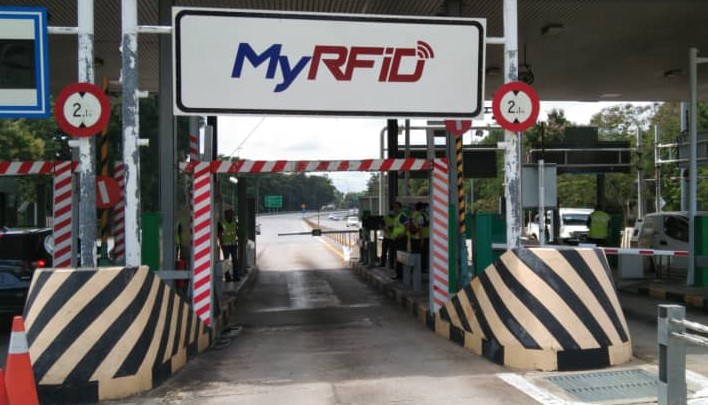
In one publicised case, PLUS had filed a suit against a logistic company named Berjasa Logistics Sdn Bhd (formerly known as Sin Kung Logistics (KL) Sdn Bhd) to recover unpaid toll fares involving 19 vehicles found to be registered to the company and driven by its employees for a number of years. The unpaid amounts totalled RM518,369.27 and in July 2017, the logistic company was considered by the High Court as well as Court of Appeal to be liable for its employees’ failure to pay toll charges. An additional RM100,000 in costs was also included in the judgement.
But it’s a tedious process and due to certain limitations and data privacy laws, getting information on motorists is not easy. In some cases now, it is possible to get the information which is recorded by toll payment companies like Touch’nGo when motorists register their details for an e-wallet account.
So before the dream of having Multi Lane Free Flow (MLFF) at toll plazas can be realised in future, something needs to be done to protect the interests of the toll concessionaires otherwise motorists will just drive through. This is understood by the Ministry of Works which is looking into the matter and will explore ways to enact laws or amend existing ones to make non-payment of toll an offence.
This means that with the Automatic Number Plate Recognition (ANPR) cameras that will be installed at every toll plaza, the toll concessionaire can have a record of the vehicle which did not pay toll, and notify the relevant authorities to take action, just like a speeding offence.
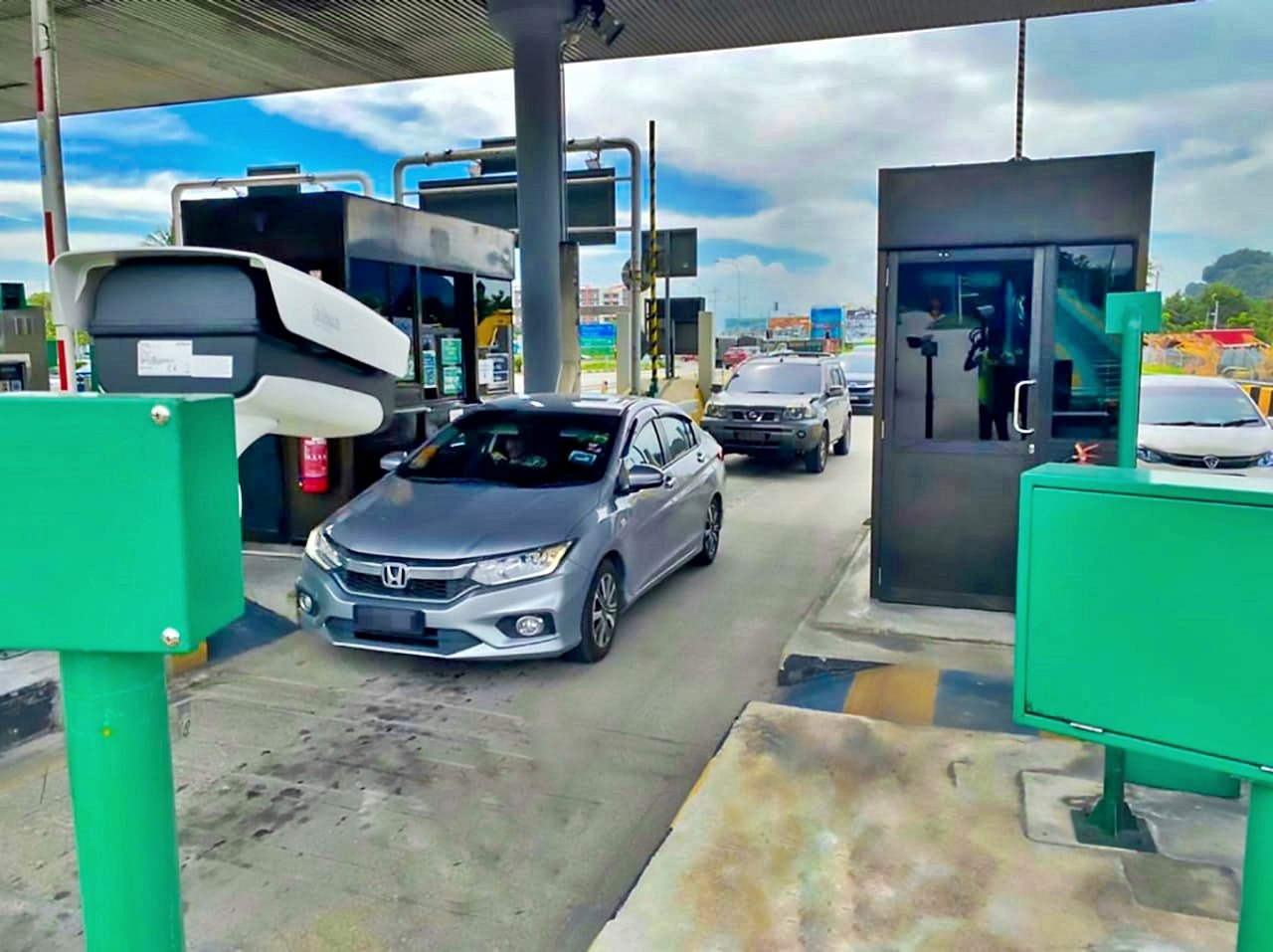
It’s strange that after so many years of having tolled highways (the very first was at Slim River in 1966), there has never been a law covering this matter. In other countries, it is certainly an offence so people make sure they pay their toll.
In fact, it is so strict in Singapore (where they have had MLFF for years) that there was one case where the owner of a car on top of a trailer received a summons for not paying the road-pricing charge when it passed under the gantry into a zone with Electronic Road Pricing. The car had problems and was being sent to the workshop and the owner had removed the tollcard from the unit (like our SmartTAG). So as the trailer passed underneath, it was detected that the car did not ‘pay’ toll and so an offence was committed!
But here’s something which should also be considered: how will it be determined that the motorist was deliberately not paying toll? What if the system is faulty – and we have seen how flawed it can be over the past month – and the car goes through but the RFID signal is not detected? Is the motorist expected to check that toll has been paid – which can be dangerous while driving – and if that is the case, then there is no point removing the barrier.
The authorities will therefore also have to make provisions in the law for such situations otherwise innocent motorists will be charged for offences they did not deliberately commit. Given the inconsistency of the RFID system in detecting the tags on vehicles (at least the SmartTAG is not as problematic any longer), the toll concessionaires will have to ensure that they can have 100% functionality. If there is a failure, it is their loss (of toll) so they would need to work hard to keep their system operating properly.
MLFF is targeted to be introduced in 2025, by which time the government expects that RFID will fully replace the current manual Touch’nGo card and SmartTAG systems. The Works Ministry has also told toll concessionaires that there needs to be various payment options available to highway users although the focus would be on linking e-wallets to RFID tags.
However, we feel that there should remain at least one lane for cash payments for ‘emergencies’ where motorists who are not regular highway users may not have RFID tags on their vehicles. With only one lane, there might be a long queue but so be it; those who do not want to wait a long time will then have to get a RFID tag for the convenience of zooming through to continue their journey.
Government directs toll concessionaires not to force motorists to use only RFID
Today, Volvo has six SUV models in its range (including electrified variants), all of which are selling well around the world. However, the company was actually late into this segment which began its rapid growth in the 1980s. Mitsubishi Motors and Isuzu had made 4×4 workhorse vehicles into more comfortable dual-purpose vehicles that could be used as alternatives to cars, and then Toyota and Honda lit the ‘SUV mania’ in the mid-1980s with their small SUVs.
Very quickly, other manufacturers began to come out with SUVs, with even the German premium brands including Porsche offering at least one model. But Volvo seemed slow to have a SUV in its range and on occasions when the Swedish executives would be asked, their response would be that they were working on a model but it had to meet the high safety standards of Volvo before they could offer it to the public.
Finally, in January 2002, at the North American International Auto Show, Volvo finally introduced its first SUV – the XC90. Some thought that the carmaker had joined the SUV segment too late although it was true that Volvo was preoccupied with the safety aspects of SUVs, which delayed its new model.
Volvo’s concerns were in part related to the truck-like driving properties which contributed to making them significant roll-over accident statistics. Such vehicles, with extra ground clearance, are taller than passenger cars and so the centre of gravity is higher up, making it easier for the vehicle to tip over in certain cornering situations.
Hans Wikman, Project Director of the XC90, recalls his feelings when the management team inspected the three design alternatives under the burning desert sun at the Arizona Proving Ground in America in May 1999. “We in the project team were a bit tense. The SUV program had been canned twice before. Now we kept our fingers crossed that our favorite design was so good that the executives would approve it without hesitation. And that’s exactly what happened,” he said.
Solving inherent safety issues
But they had to solve the safety issues and were determined to do so when the XC90 was cleared to proceed towards production by Volvo’s top management. And Wikman and his team were able to come up with ingenious approaches to addressing the known issues of SUVs. At that time, Volvo was part of Ford so there resources were shared in doing research on the issues. Ford too wanted active systems that could make its SUVs safer.
The solution was a system called Roll Stability Control (RSC), which was an automotive world-first when it was introduced in the XC90. Using a gyro-sensor, RSC measures the degree and rate at which the vehicle’s body is leaning and if it senses a rollover is about to occur, the system is activated. The electronic stability control system engages, engine torque is reduced and one or more wheels are braked until the car has regained its stability.
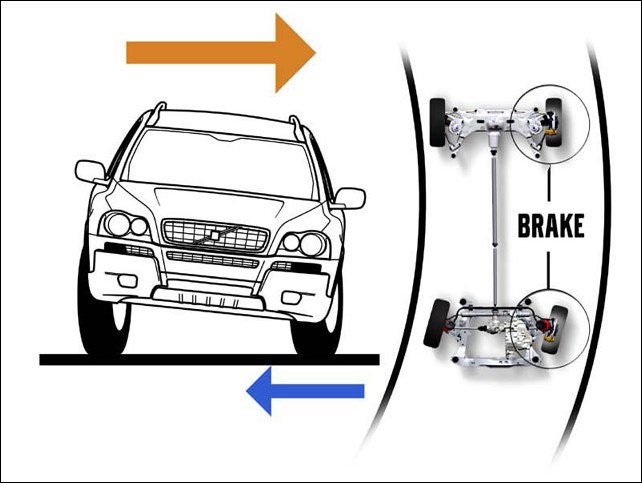
Cooperation between the reinforced roof structure, seat belt pre-tensioners and inflatable side curtains helped create superb roll-over protection for all 7 occupants. This world-class safety level was demonstrated in an unusually tangible way when the Volvo invited the world press to watch a violent roll-over test with the XC90 outside the state-of-the-art Safety Centre in Gothenburg, Sweden.
Demonstration in front of media
The video from the 2002 event, still available on YouTube, shows how the XC90 rolls over three times before ending up on its right side. “The roof structure was more or less intact after the car finished rolling. The spontaneous applause from the media representatives confirms that we made a real impression with this unique demonstration,” said Wikman.
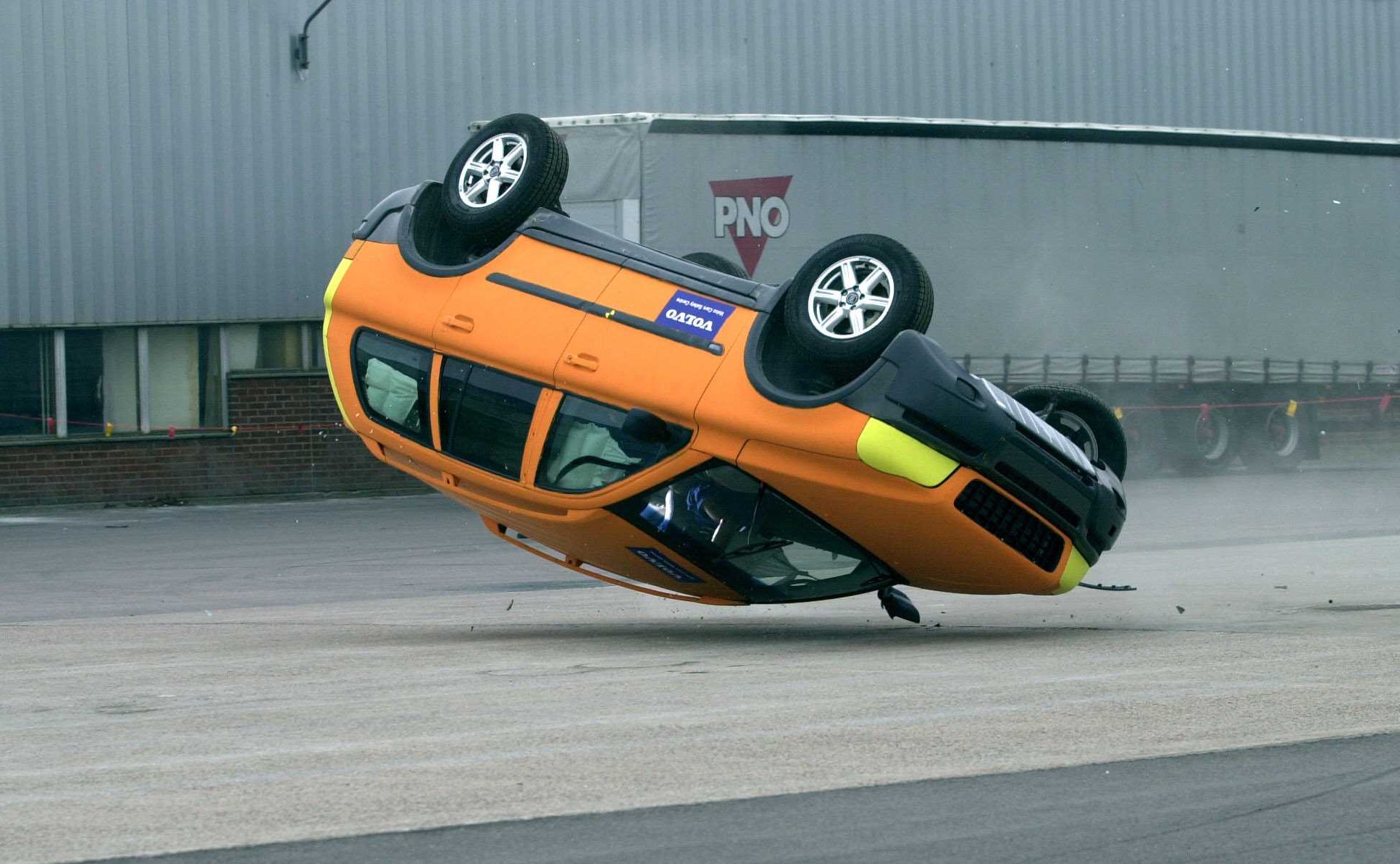
The safety level is also emphasized in the Volvo Car Corporation’s research. The accident investigation files include remarkably few accidents where XC90 occupants have been killed or sustained severe injuries.
Besides the RSC system, the other world-firsts in the new SUV were inflatable side curtains for all three rows of seats, an integrated sliding centre booster seat for children in the second row and seatbelts with pre-tensioners for all seats. The pre-tensioners, now common in cars, remove slack from the seatbelt when there is a collision and the airbags are about to deploy. By doing so, the restraint is more effective and can help to reduce injuries in some cases.
Female feedback for the design
Doug Frasher, working at the Volvo Cars Monitoring and Concept Center (VMCC) in California, was the proud father of the winning design that became the production XC90. And just like the first Ford Escape, the model benefitted from having a female group provide feedback on the design and features. The multi-background reference group, including Swedish Hollywood actress Maud Adams, inspired the shape of the XC90 by asking for masculinity instead of the traditional ‘macho look’ of most SUV’s,
“The model we showed to the management was almost identical to the production XC90 we revealed in Detroit. We had done our homework well, much thanks to our female reference group. A majority of SUVs were driven by women and our ladies gave us great input,” said Frasher.
“I remember one of the ladies making a sweeping gesture that almost sketched the sleek shape of the bonnet flowing up on the A-pillar. We put a lot of effort into creating a design that felt strong and protective without the impression of sheer size. The XC90 was muscular, but not aggressive,” he recalled.
A success story for Volvo
Volvo’s original target for the first XC90 was 50,000 units per year worldwide. However, the model became so popular that the figures grew rapidly until they peaked at 86,000 units in 2005. The US market imported up to 38,800 units in one year. That made it Sweden’s most valuable export product, with total yearly export value over US$6.2 billion in the peak years.

When Volvo drove a car off a building for a crash test (w/VIDEO)
While the extreme design of the E-TENSE PERFORMANCE may make it seem like just a showcar, it is actually intended for use as a high-performance laboratory by DS Automobiles, the spin-off brand from Citroen which became a standalone brand.
The prototype has been conceived to accelerate the development of technology for the future of DS Automobiles design. It has been devised, developed and created by DS Performance, which has been successfully participating in the single-seater electric Formula E series.
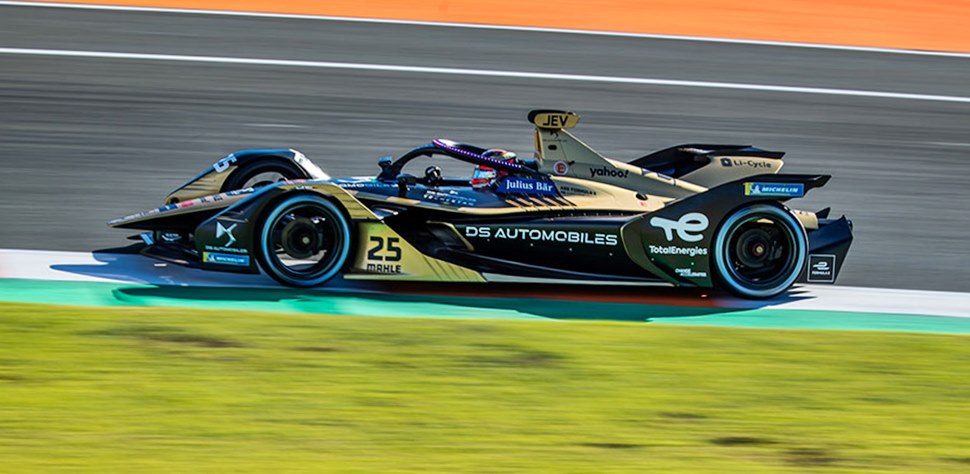
“Our objective is to apply the experience acquired in Formula E and the expertise that we’ve taken from our international titles to a project which predicts the high-performance electric car of tomorrow. It is a laboratory that we will use to analyse the behaviour of components and to develop them with a view to future manufacturing. The idea is also to find solutions to lower costs, make them easier to manufacture and explore implementations in production models. The next generations of the E-TENSE range will benefit from these developments,” said Thomas Chevaucher, Director of DS PERFORMANCE, the brand’s motorsports division.
Up to 8,000 Nm
The powertrain is made up of two electric motors giving a combined power of 600 kW (250 kW at the front, 350 kW at the back) corresponding to 815 hp and torque of 8,000 Nm at the wheels. Taken straight from DS PERFORMANCE developments for Formula E, these two electric motors prioritise the use of energy in the most effective way. If, physically, the DS E-TENSE PERFORMANCE keeps a braking system with discs and pads for safety, only the regeneration system is used for braking.
The battery pack is one of the fundamental parts of the very high-performance mobile laboratory. It is compact and housed in a carbonfibre-aluminium composite envelope. This is situated in a central rear position for optimum weight distribution. The battery pack, using experience from electric car racing, is developed jointly with TotalEnergies and its subsidiary Saft. It uses innovative chemistry and an immersive cooling system for cells – at odds with current technology – thanks to a bespoke design of Quartz EV Fluid solution. This battery permits phases of acceleration and regeneration of up to 600 kW, enabling the exploration of new avenues for future generations of production vehicles.
The design language
The DS Design Studio Paris was responsible for the extreme form with a frontal appearance that has a new surface for expression in place of the grille. Already suggested by the DS AERO SPORT LOUNGE, this treatment combines the DS Automobiles logo with a 3-dimensional effect that displays a special welcome sequence.
On either side, new daytime lights combine technology and design with unprecedented thinness to give a wide span of light (made up of 800 LEDs). Two cameras are used instead of headlamps, providing a visual identity while enabling useful data to be collected while on the move.
To go with the aerodynamic lines, the bodywork introduces a ‘beetle-effect’ interference colour. Depending on exterior conditions and the viewing angle, the perception of the colour changes and gives a striking contrast against the gloss black surfaces stretching to the bonnet.
The cockpit has been conceived to gather data. Bucket seats and a Formula E steering wheel create an ambience devoted to high performance but there is also comfort and attention to detail. An in-car FOCAL Utopia sound system with a pair of exclusive Scala Utopia Evo speakers give a unique signature sound.
Pick-up trucks are big business in the US market and have been top-sellers for decades. Their popularity made the Ford F-Series the bestselling vehicles on the planet (though almost entirely sold in North America). While the Big Three – GM, Ford and Chrysler – have long dominated this segment of the market, newcomers from foreign brands like Toyota and Nissan have also made inroads but the American trucks are still firmly entrenched.
Now comes the next wave of competitors in the segment and they are not only entirely new players like Tesla, EdisonFuture, Canoo and Rivian but they are also starting off with electrically-powered trucks so they are positioning themselves for the future. Ford and GM are already on the starting line as well with their own fully electric pick-ups that have seen soaring orders – to the extent that Ford had to stop taking orders for its new F-150 Lightning.
Most of the products of the new players are not in the market yet but have been shown at motorshows and drawn tremendous response. Orders are flooding in for vehicles that will begin to reach customers later this year and in coming years. Clearly, American buyers are receptive to the idea of electrically powered trucks even though, traditionally, such vehicles have had huge engines to give them their workhorse capabilities.
As EV technology is still developing and evolving, there are many approaches being taken and some are innovations too. One of the innovative new trucks is from a start-up called EdisonFuture. It’s a 2-year old company established and based in California but if you follow the ownership trail, it will lead back across the Pacific to China’s SPI Energy.
The Chinese company also owns Phoenix Motorcars, which has specialised in developing medium-duty electric vehicles for commercial markets over the past two decades. So EdisonFuture is already starting off with access to substantial technological resources for developing its products which are trucks.
EdisonFuture is working on at least two models, both of which have been shown in concept form. The first is the EF1-T which has a solar charging capability which will provide up to 55 kms of range per day. The integrated solar panel over the vehicle can be pulled out over the rear bed and locked into place to protect the contents. The unique panel is called ‘Armadillo Armour’ and presumably has a tough construction.
Utilizing the same chassis and platform of EF1-T, the EF1-V Delivery Van is a robust and modern multi-purpose van. It can be used for work as well as travel or personal use in varying road and environment conditions from city streets to off-road.
As it functions as a delivery van, the EF1-V is given an enclosed body with sliding side doors and varying cargo volumes within a space-efficient container that is almost 2 metres long. The entire top of the cargo box is covered with solar panels so the battery pack can be recharged while parked.
EdisonFuture will offer three different powertrains to suit different requirements with either one, two or three motors. Power and torque outputs have not been revealed yet but there is a claim of up to 725 kms on a fully charged battery pack for the tri-motor version. There will also be a choice of battery packs up to 180 kWh.
Since appearing at the Los Angeles Auto Show late last year, EdisonFuture has seen encouraging response though most of it has been for the pick-up rather than the delivery van. Perhaps there are also proven and cost-effective electric vans already in the market and fleet operators are satisfied with them, and expect to keep them in use for a while longer.
The designs that were shown are still conceptual and works in progress. Icona Design, an Italian group, has been brought on board to collaborate on the exterior design of the two vehicles. As the production models won’t be on sale till 2025, there will still be time to get feedback at motorshows and from fleet operators to get the design right.
“Our vision for EdisonFuture and Phoenix Motorcars is to be leaders in sustainable transportation with focus on energy efficiency and innovative design,” said Xiaofeng Peng, Chairman & CEO of SPI Energy earlier this year.
Canoo unveils fully electric pick-up truck with production to start in 2023
© Copyright – Piston.my 2024 Trademarks belong to their respective owners. All rights reserved